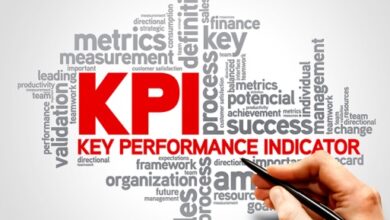Candidate profile/How to map/Advantages/How to analyze
Hiring a new professional is a common challenge in a recruitment and selection process . After all, it is necessary to describe the vacancy in the best way, define the necessary skills and competences, and draw a good profile of the candidate to ensure assertiveness. However, this is not always done in the best way.
This is not an easy task, but creating an ideal candidate profile can help improve the recruitment process, ensuring higher quality of hire and a better fit of the candidate for the position.
In this article, you will learn what the candidate profile is, how to monitor it and how the correct description can help you in your recruitment efforts. In addition, here are also some tips on what to look for in the candidate’s final interview.
What is a candidate profile?
In short, the candidate profile is nothing more than the correct description of the functions and the technical and social skills required for the position combined with the cultural fit of the company. When the recruiter has this panorama very well defined, it is easier to find the best match of professionals.
Developing an ideal candidate profile is the first step. However, bringing this best candidate drawing to life is another story. To be successful in this journey, some stages like doing a focused search, narrowing the candidates and conducting a proper mapping of professionals need to be followed.
How to map a candidate’s profile?
When a person is sick, the doctor presents a diagnosis to the patient based on data analysis (tests ordered), the doctor-patient conversation, and the person’s medical history. This is more or less what happens when someone in the Talent Acquisition area monitors a candidate’s profile.
Based on the description of the ideal professional for the vacancy, the recruiter will map the profile of the pre-selected candidates, observing the technical and social skills of the professionals described in exams conducted during the pre-selection process, in the interview with the candidate and in their history. professional.
Each step of this monitoring is a filter that indicates whether the candidate should move forward in the R&S process. To help the recruiter on this journey, it is critical to invest in the right technology that will make this process of sifting through candidates faster and more intuitive.
Advantages of mapping the candidate profile
When buying a new cell phone, most people conduct an internet search to understand the benefits of each device and their prices. Buying a mobile blindly, nowadays, is almost like jumping in a parachute without the equipment having been previously checked.
Many candidates say they have knowledge of a certain tool, but in practice they have only read about it, and this can greatly impact productivity. Therefore, mapping the candidate profile is a precondition for the success of your R&S process.
From this correct monitoring, it is possible to observe the increase of some indicators in the area of R&S and people management, such as:
- best SLA for the job ;
- increases the quality of hires;
- decrease in the cost of hiring;
- decreases turnover;
- professional engagement;
- increases productivity.
How to analyze a candidate profile
Imagine that you are in the final stage of your hiring cycle. All selected candidates appear to be highly qualified, certified and possess relevant skills. How do you help the job manager make the final decision?
It is a difficult choice, which will have consequences if a wrong decision is made. So, here are some candidate screening tips that can help you screen them in the best possible way:
1. Observe The Candidate’s Body Language
Recruiters often pay attention to a candidate’s body language. But do you recognize what really needs to be monitored?
See if your candidates are making eye contact; Are they dodging, trying to hide, or actively responding to your inquiries? How is he/she responding to an unlikely scenario?
Here it is also good to point out that these tips are valid both in face-to-face and virtual recruitment. After all, according to a study by consultancy PwC, the trend of online recruitment will remain in the post-pandemic context.
2. Problem-Solving Capabilities
Regardless of the industry, it is vital to hire candidates who can provide specific answers to market obstacles. In this sense, during the interview or even in the assessment tests, ask related questions in this regard.
3. Observe How They Treat And Deal With Others
Respondents will almost always be well-behaved with the interviewer, however, is this behavior observed in everyday work? How does the candidate deal with different people in your company? Are they polite to people in lower positions? Do they try to help colleagues in work situations?
A selection process of trainees from the Dutch brewery Heineken became very famous in the HR circles. The final phase of the process consisted of a kind of prank, where finalists had to help help the boss who simulated a health problem and help the firefighters in the simulation of a fire in the building where the selection took place. The vacancy went to a candidate who showed more empathy and helped in these situations.
One more tip: if the interview is virtual, there are already some online gamified processes that can monitor this type of candidate’s soft skill.
Remember, even a job that is often considered solitary, such as accounting or software development, can also require input from different groups of people. Therefore, you must properly check a candidate’s team building skills.
5. Willingness To Learn And Adaptability
Organizations and the way they operate are changing all the time. Candidates who do not research risk being left behind, regardless of their accumulated knowledge or work experience.
A willingness to learn new things in an organization and a curiosity to know more are some critical qualities of a good employee who is able to grow every day — not just to learn new hard skills, but also to develop soft skills.




